Abstract
Three groups of albino rats were trained under a free-operant avoidance (Sidman) procedure with equal shock-shock and response-shock intervals. After stable performance was achieved, the animals were concurrently exposed to a brief electric shock after each response. The procedures were as follows: Punishment Schedule I: punishment shock was introduced at an intensity approximately one quarter that of avoidance shock; increments of nearly this same size were made as stable performance was achieved at succeeding punishment shock intensities. Punishment Schedule II: punishment shock was introduced at approximately one-half the intensity of avoidance shock; after stable performance, punishment shock was increased to the same intensity as avoidance shock. Punishment Schedule III: punishment shock was introduced and maintained at the same intensity as avoidance shock. Punishment was continued for all groups until one of two suppression criteria was attained. All animals made fewer responses and received more avoidance shocks as a function of increasing punishment shock. Half of the animals under Punishment Schedule I required punishment shock higher than avoidance shock to meet their assigned suppression criterion. A comparison of all procedures showed that suppression was greater when punishment shock was initially at high intensity.
Full text
PDF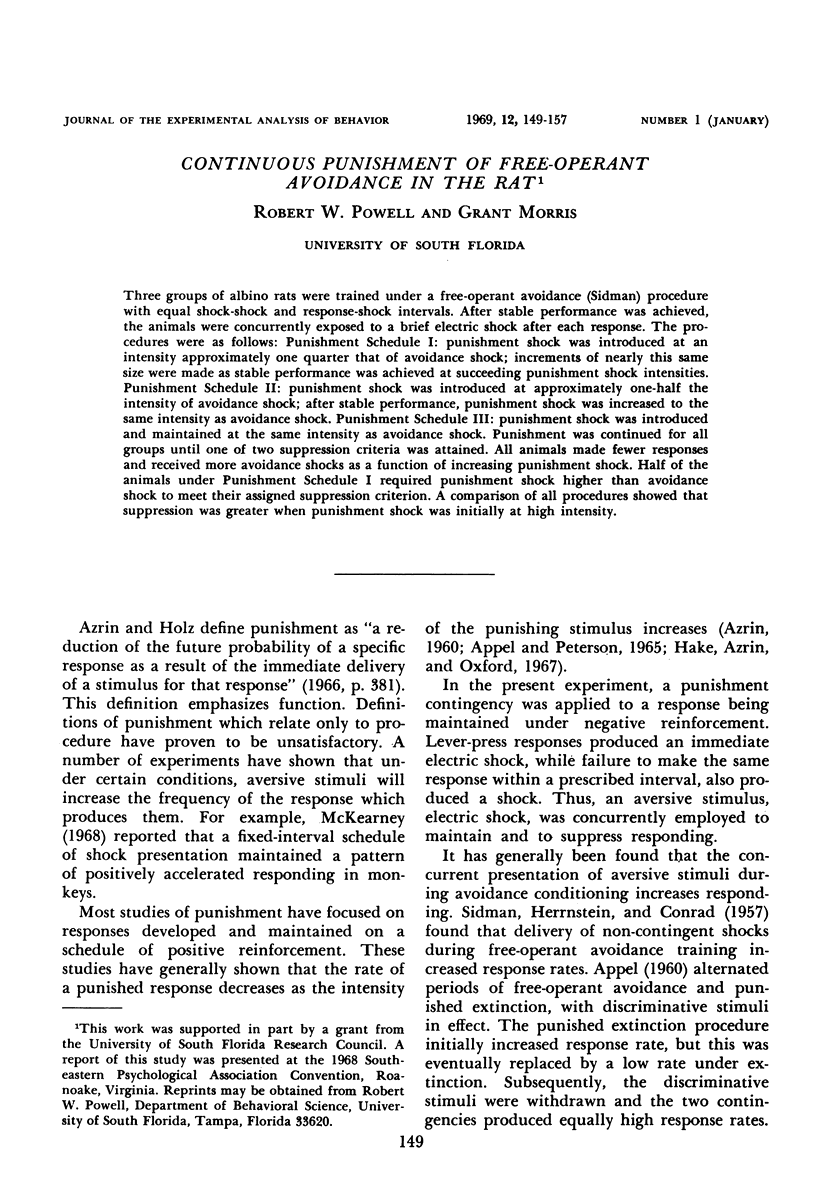
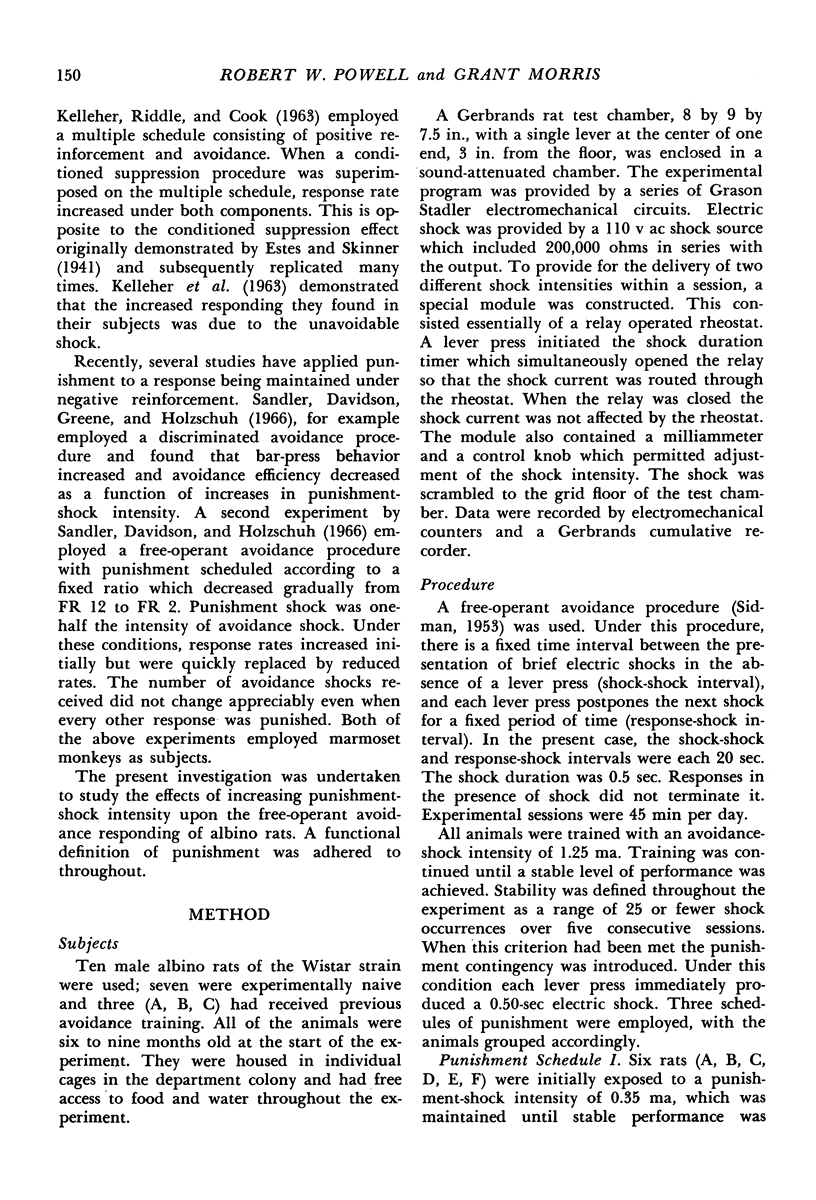
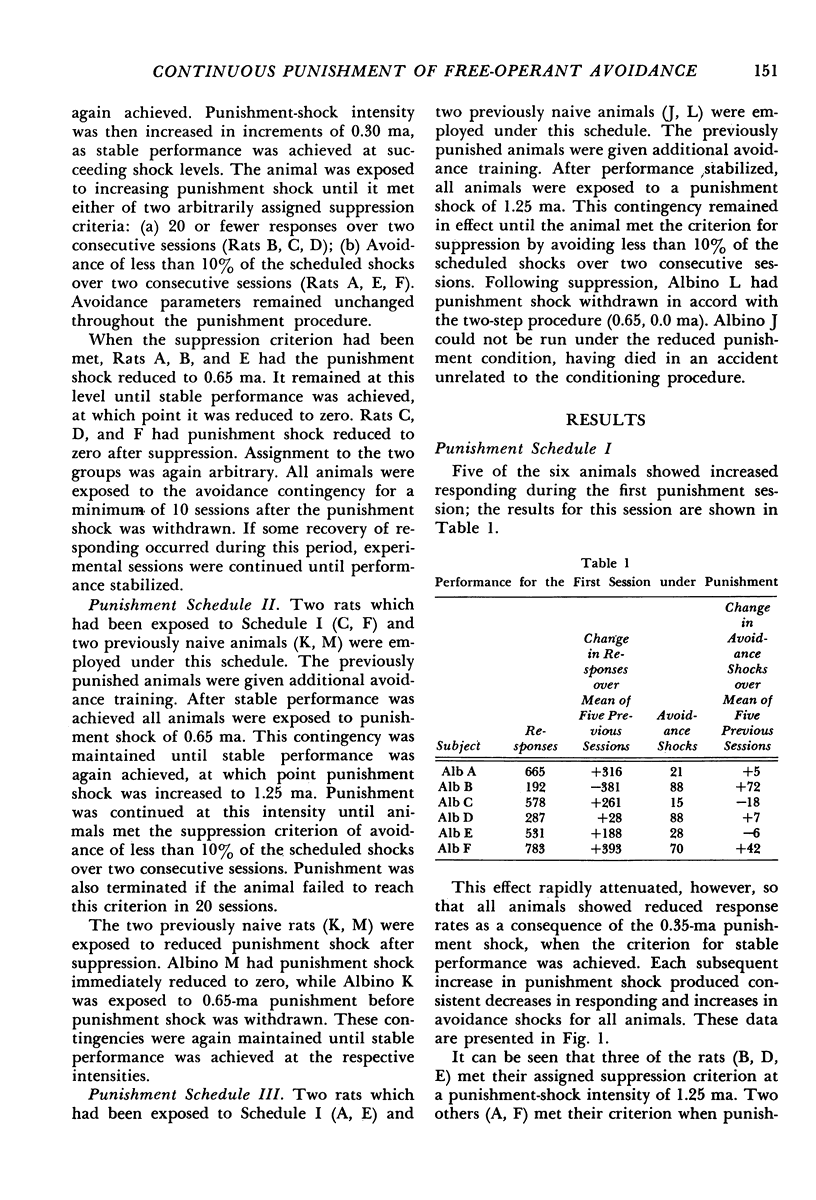
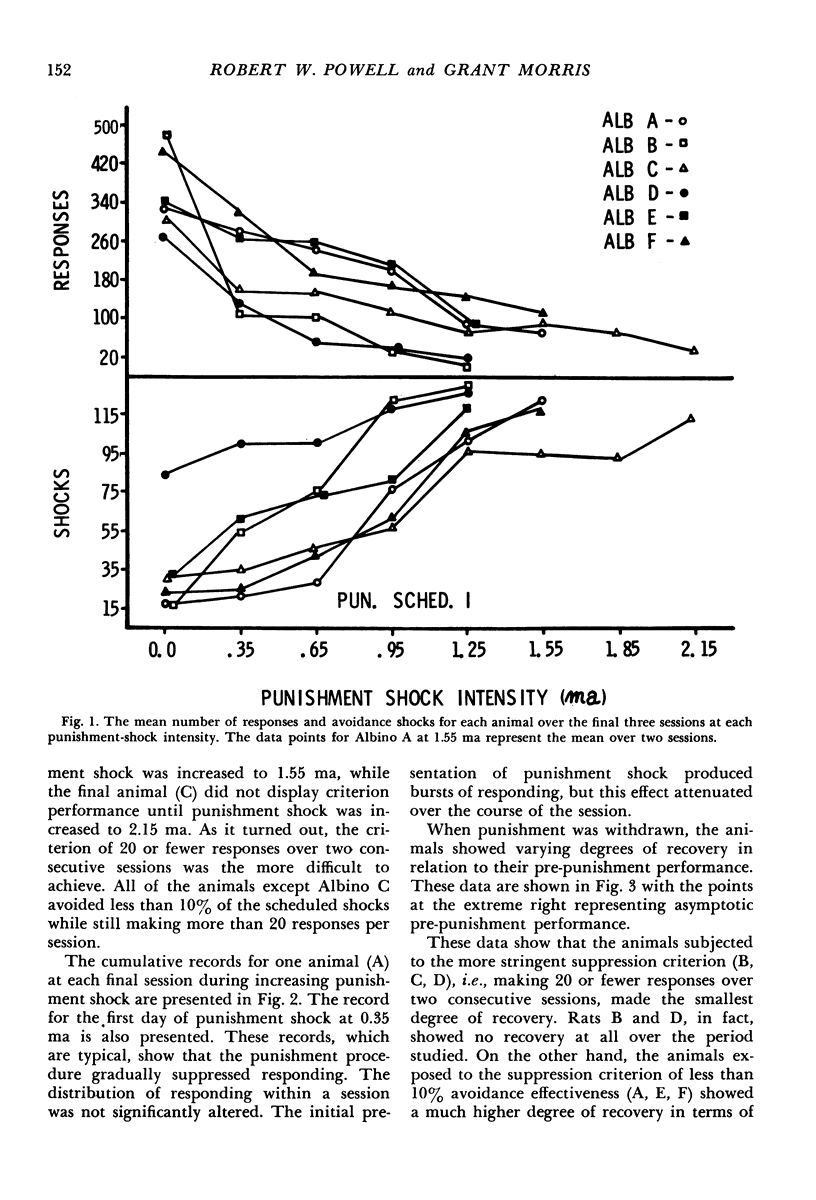
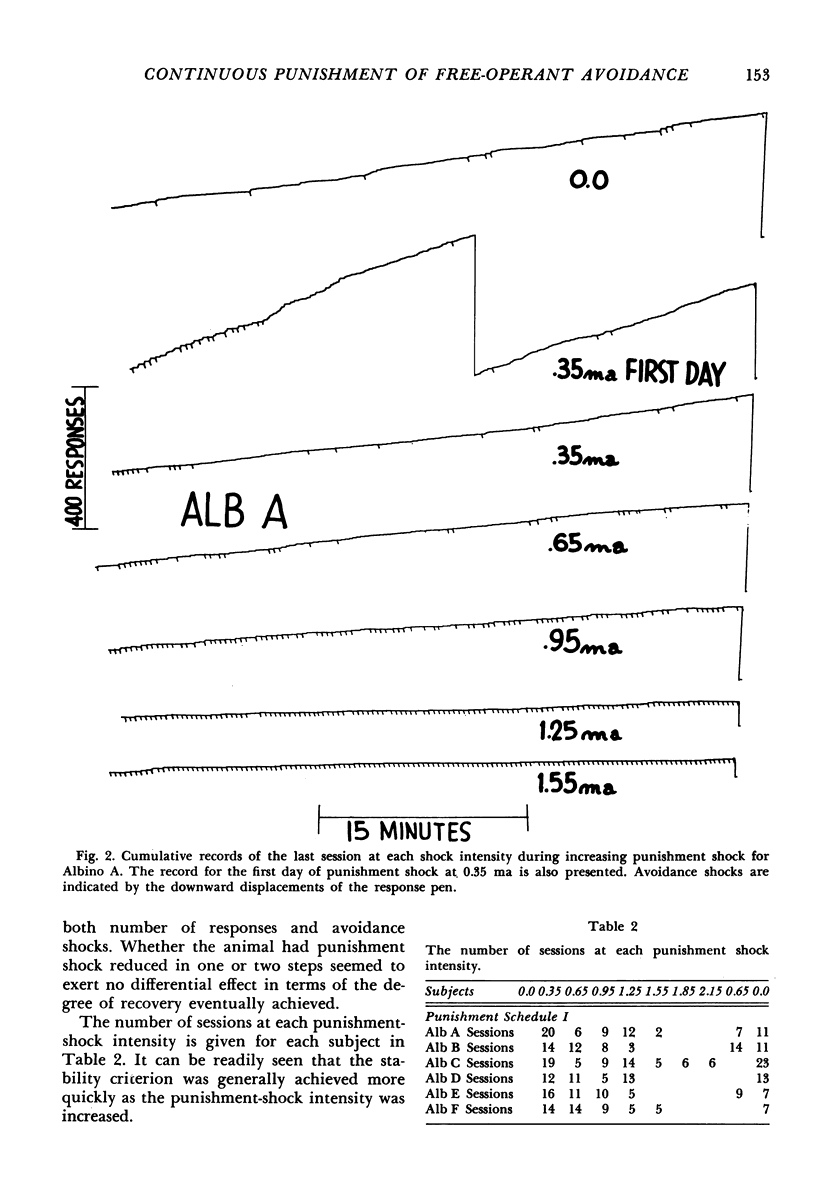
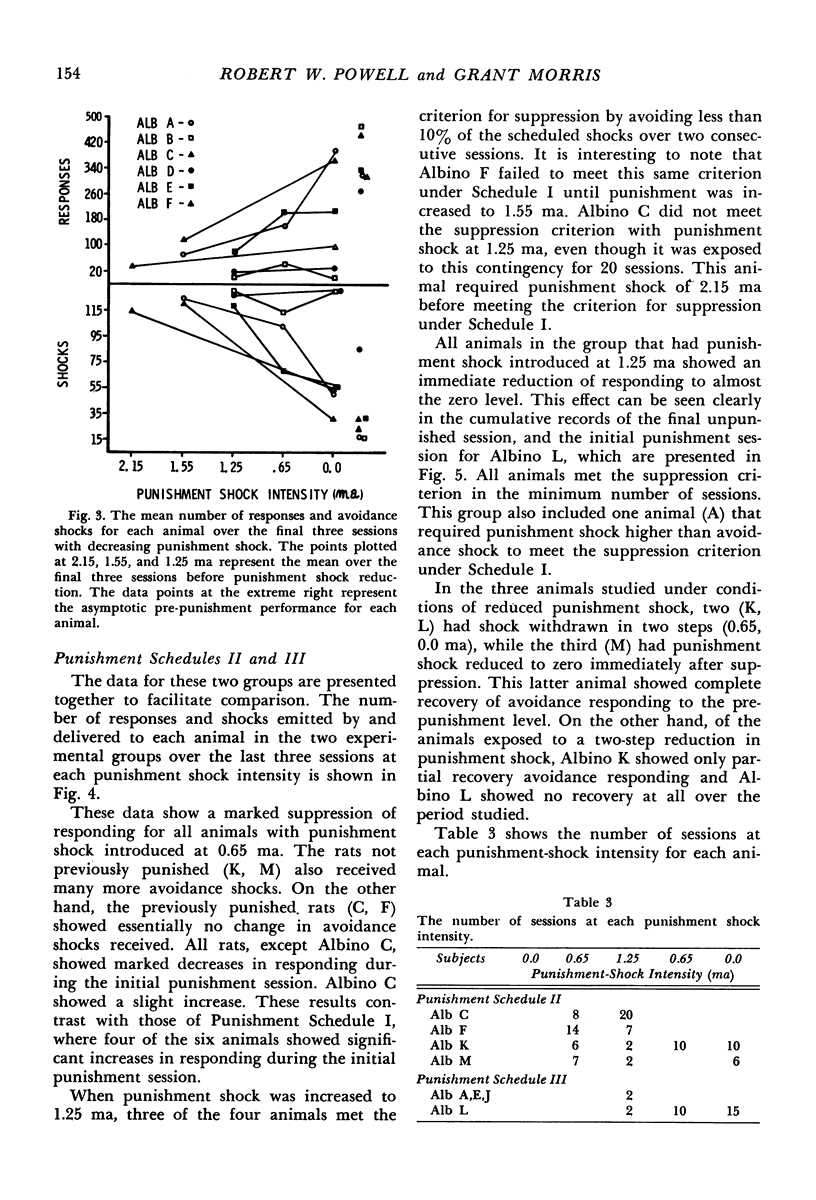
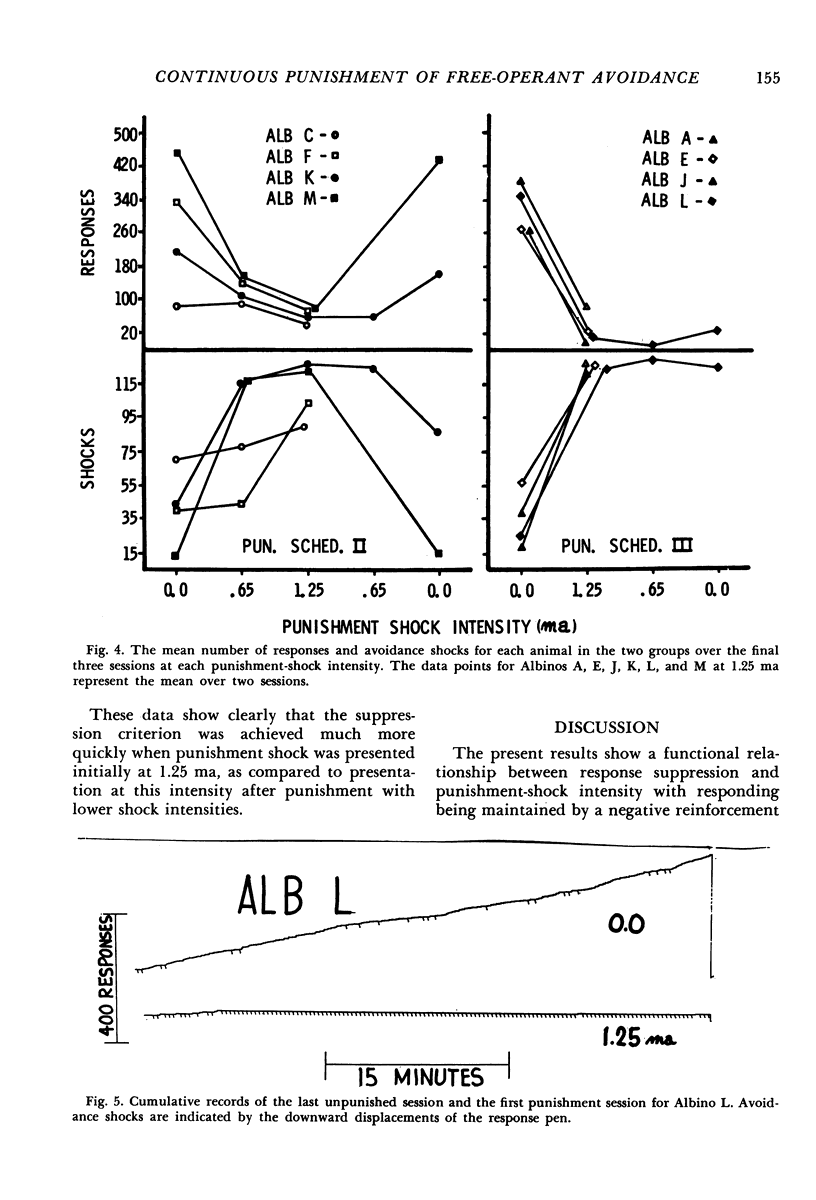
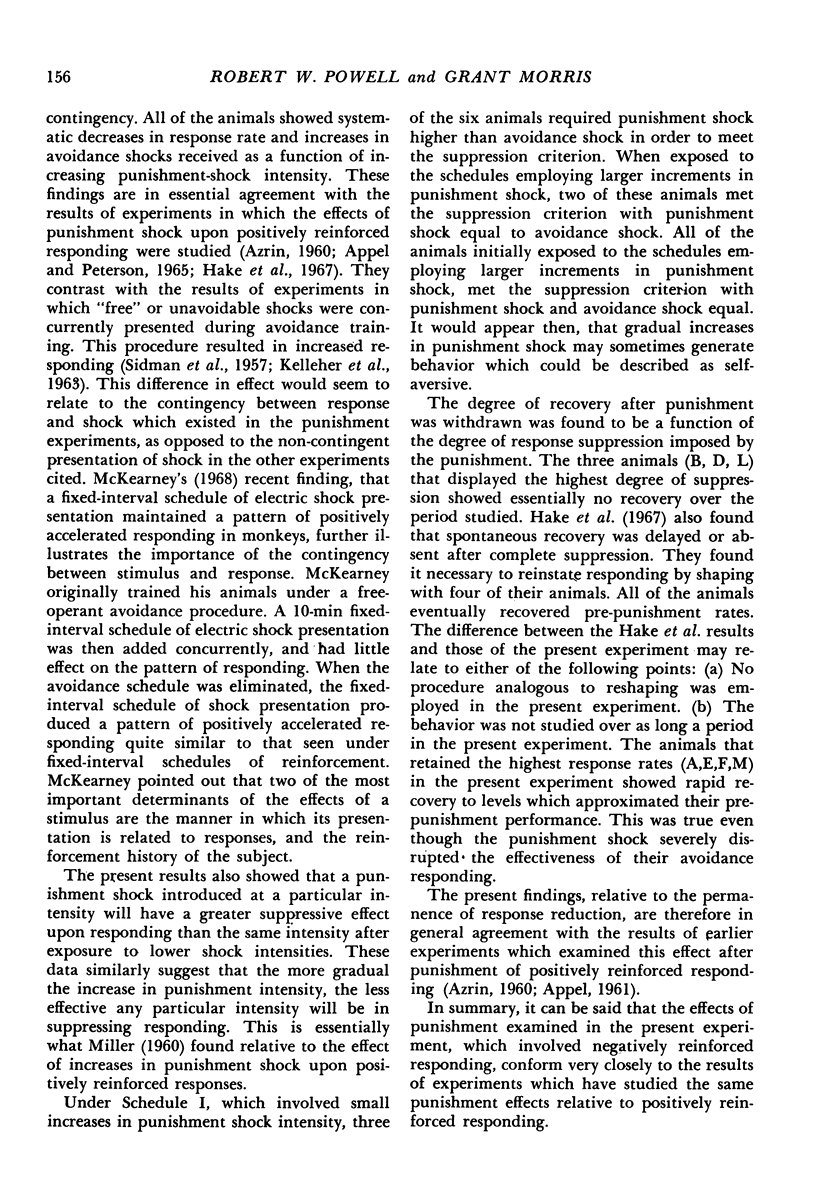
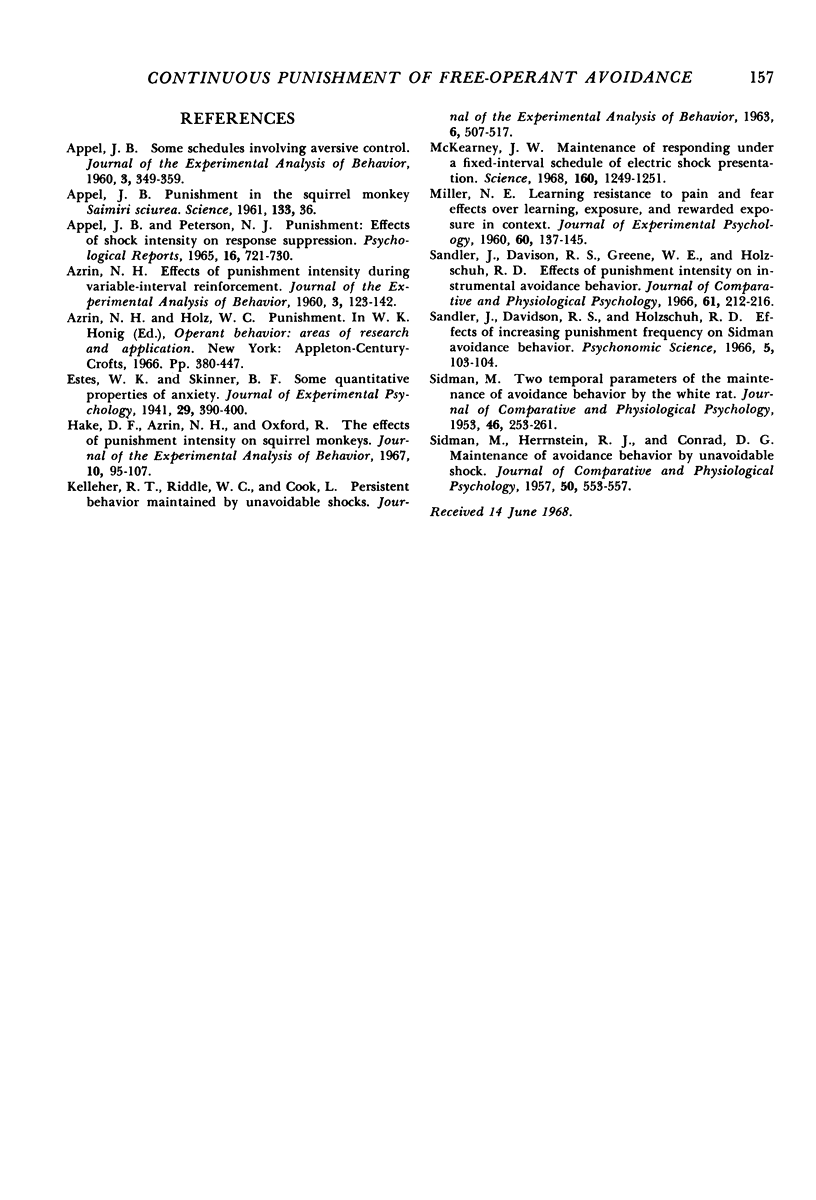
Selected References
These references are in PubMed. This may not be the complete list of references from this article.
- APPEL J. B., PETERSON N. J. PUNISHMENT: EFFECTS OF SHOCK INTENSITY ON RESPONSE SUPPRESSION. Psychol Rep. 1965 Jun;16:721–730. doi: 10.2466/pr0.1965.16.3.721. [DOI] [PubMed] [Google Scholar]
- APPEL J. B. Punishment in the squirrel monkey Saimiri sciurea. Science. 1961 Jan 6;133(3445):36–36. doi: 10.1126/science.133.3445.36. [DOI] [PubMed] [Google Scholar]
- APPEL J. B. Some schedules involving aversive control. J Exp Anal Behav. 1960 Oct;3:349–359. doi: 10.1901/jeab.1960.3-349. [DOI] [PMC free article] [PubMed] [Google Scholar]
- AZRIN N. H. Effects of punishment intensity during variable-interval reinforcement. J Exp Anal Behav. 1960 Apr;3:123–142. doi: 10.1901/jeab.1960.3-123. [DOI] [PMC free article] [PubMed] [Google Scholar]
- Hake D. F., Azrin N. H., Oxford R. The effects of punishment intensity on squirrel monkeys. J Exp Anal Behav. 1967 Jan;10(1):95–107. doi: 10.1901/jeab.1967.10-95. [DOI] [PMC free article] [PubMed] [Google Scholar]
- KELLEHER R. T., RIDDLE W. C., COOK L. PERSISTENT BEHAVIOR MAINTAINED BY UNAVOIDABLE SHOCKS. J Exp Anal Behav. 1963 Oct;6:507–517. doi: 10.1901/jeab.1963.6-507. [DOI] [PMC free article] [PubMed] [Google Scholar]
- MILLER N. E. Learning resistance to pain and fear: effects of overlearning, exposure, and rewarded expsure in context. J Exp Psychol. 1960 Sep;60:137–145. doi: 10.1037/h0043321. [DOI] [PubMed] [Google Scholar]
- McKearney J. W. Maintenance of responding under a fixed-interval schedule of electric shock-presentation. Science. 1968 Jun 14;160(3833):1249–1251. doi: 10.1126/science.160.3833.1249. [DOI] [PubMed] [Google Scholar]
- SIDMAN M., HERRNSTEIN R. J., CONRAD D. G. Maintenance of avoidance behavior by unavoidable shocks. J Comp Physiol Psychol. 1957 Dec;50(6):553–557. doi: 10.1037/h0043500. [DOI] [PubMed] [Google Scholar]
- SIDMAN M. Two temporal parameters of the maintenance of avoidance behavior by the white rat. J Comp Physiol Psychol. 1953 Aug;46(4):253–261. doi: 10.1037/h0060730. [DOI] [PubMed] [Google Scholar]
- Sandler J., Davidson R. S., Greene W. E., Holzschuh R. D. Effects of punishment intensity on instrumental avoidance behavior. J Comp Physiol Psychol. 1966 Apr;61(2):212–216. doi: 10.1037/h0023149. [DOI] [PubMed] [Google Scholar]


